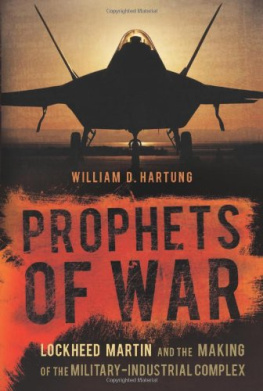Praise for How Everything Became War and the Military Became Everything
In a masterful argument, sometimes between her own contradictory feelings, Rosa Brooks shows how battle lines have been blurred. Soldiers work, and sometimes rule, in areas once the uncontested realm of civilians. It is another complex, potentially dangerous, challenge that we must work to understand. Start with this book.
General Stanley McChrystal (U.S. Army, Ret.), former commander of U.S. Forces in Afghanistan
Brooks has written the best book yet on the space betweenthat messy blend of war and not-war that characterizes so much of our world. As equal parts legal scholar, policy practitioner, and engaged citizen, shes the perfect guide for a tour of our national nobility... and absurdity.
Nathaniel Fick, bestselling author of One Bullet Away
A hugely significant, very thought-provoking examination of how and why Americas armed forces have been pulled into myriad missions beyond strictly military tasks, written by a woman uniquely qualified for such an undertaking.
General David Petraeus (U.S. Army, Ret.), former CENTCOM commander and former director of the CIA
Rosa Brooks is one of the most fluid, thoughtful, and interesting writers in the field of national security, and her important and entertaining new book is an intriguing hybrid of memoir and policy analysis. How is it that, a decade and a half after 9/11, we now live in a strange twilight world where the old boundaries between war and peace are being erased? There is no better guide to how and why this happened than Brooks.
Peter Bergen, author of United States of Jihad
The question of where the lines are between war and peace, between the military and the civilian world in 21st-century conflicts that never seem to end, is among the most vexing and important in American politics today. Brooks deftly tackles these issues, weaving together rich analysis with personal anecdotes and stories that pull you in. Its a book that wont just inform you, but will make you think.
P. W. Singer, author of Wired for War , Cybersecurity and Cyberwar , and Ghost Fleet
Thank you for downloading this Simon & Schuster eBook.
Join our mailing list and get updates on new releases, deals, bonus content and other great books from Simon & Schuster.
C LICK H ERE T O S IGN U P
or visit us online to sign up at
eBookNews.SimonandSchuster.com

Simon & Schuster
1230 Avenue of the Americas
New York, NY 10020
www.SimonandSchuster.com
Copyright 2016 by Rosa Brooks
All rights reserved, including the right to reproduce this book or portions thereof in any form whatsoever. For information address Simon & Schuster Subsidiary Rights Department, 1230 Avenue of the Americas, New York, NY 10020.
First Simon & Schuster hardcover edition August 2016
SIMON & SCHUSTER and colophon are registered trademarks of Simon & Schuster, Inc.
For information about special discounts for bulk purchases, please contact Simon & Schuster Special Sales at 1-866-506-1949 or .
The Simon & Schuster Speakers Bureau can bring authors to your live event. For more information or to book an event contact the Simon & Schuster Speakers Bureau at 1-866-248-3049 or visit our website at www.simonspeakers.com.
Interior design by Paul Dippolito
Jacket design by Darren Haggar
Jacket image by Brais Seara/Getty Images
Library of Congress Cataloging-in-Publication Data
Names: Brooks, Rosa, author.
Title: How everything became war and the military became everything / Rosa Brooks.
Description: New York : Simon & Schuster, [2016] | Includes bibliographical references and index.
Identifiers: LCCN 2016005348 (print) | LCCN 2016009107 (ebook) | ISBN 9781476777863 (hardcover) | ISBN 9781476777870 (pbk.) | ISBN 9781476777887 (E-Book)
Subjects: LCSH: United StatesMilitary policy. | Strategic cultureUnited States. | War (International law)Philosophy. | Armed ForcesOperations other than war. | TerrorismPreventionGovernment policyUnited States. | Just war doctrine. | National securityUnited States. | MilitarismUnited States. | United StatesHistory, Military20th centuryAnecdotes. | United StatesHistory, Military21st centuryAnecdotes.
Classification: LCC UA23 .B7837 2016 (print) | LCC UA23 (ebook) | DDC 355/.033573dc23
LC record available at http://lccn.loc.gov/2016005348
ISBN 978-1-4767-7786-3
ISBN 978-1-4767-7788-7 (ebook)
For Joe, Anna, and Clara
Contents
PART I
Tremors
A Window of Opportunity
O ne ordinary day in 2010, I sat in an anonymous Pentagon conference room with a dozen other people, listening as briefers from the militarys Special Operations Command went over plans for an impending strike against a terrorist operative. Sending in special operations forces would be too risky, they said; we would therefore most likely strike the target using missiles fired from an unmanned aerial vehicle.
I cant tell you the region or the identity of the target. During my twenty-six months working at the Defense Department, I signed dozens of papers promising to keep the secret stuff secret, and unlike Edward Snowden, I have no desire to give out classified informationor live life as a fugitive. But I think I can say that the target was a youngish man, probably not more than thirty. I dutifully studied the small photo displayed on the briefing slides. It showed an ordinary face, the kind you might see on any street in Sanaa or Karachior New York or London. But this, the briefers assured us, was no ordinary young man; there was solid evidence (not detailed) of his involvement in numerous terror plots (exhaustively detailed).
For months, they explained, we had been unable to track the target, but he had finally made one of those mistakes even hardened terrorists seem apt to make, like calling his mother on his cell phone, or arranging by email to meet an old friend in a caf, or allowing his picture to be included in an otherwise innocuous Facebook post. One of our intelligence agencies had noticed the slip. (Nice! someone murmured from the back of the room.) The target was currently occupying a house in a populated area, but as soon as a window of opportunity opened up, the briefers promisedas soon as the target moved to an isolated location, reducing the danger to any innocent bystanderswe would strike.
We all nodded gravely. Of course. What was there to say? We were at war with al Qaeda and its far-flung associated forces, and this man was an enemy combatant and a lawful target.
A day or two later, I was home eating dinnerspaghetti and meatballs, my six-year-old daughters favoritewhen I got a phone call from a colleague. You know that thing we were discussing? he asked. That window? It opened up a few hours ago.
It was an open line, and he couldnt say much. But I knew what he meant. The previous day, the young man whose photo I had studied was alive; now he was dead.
Thanks for letting me know, I said. You can fill me in tomorrow. And I went back to dinner with the kids.
That night, I dreamed about death: someone I loved, murdered. I woke up panicky and sweating.
Wars Tentacles
I knew already that I was part of a vast, bureaucratic death-dealing enterprise. Although I pulled no triggers and signed no military orders, I, like every single man and woman working at the Pentagon, was part of a machine that sent people off each day to kill and die. Each morning, I thumbed through the latest reports of U.S. troops killed in Iraq and Afghanistan, along with intelligence reports of terrorists, insurgents, and Taliban fighters killed or presumed dead. All this sobered and saddened me, but rarely disturbed my sleep.
Next page











